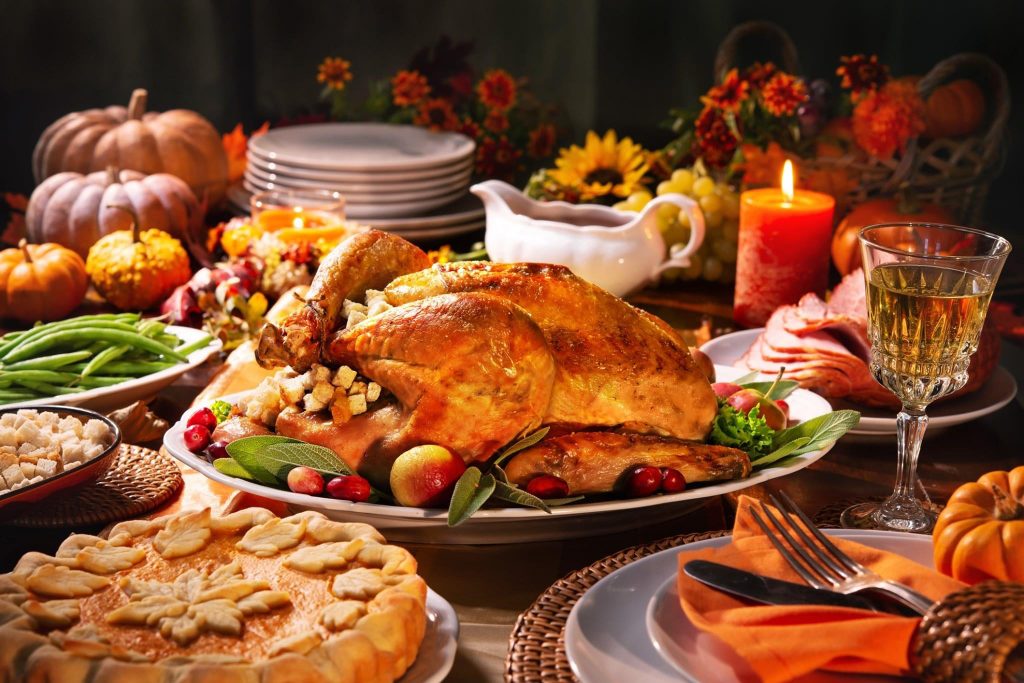Thanksgiving Food Origins You’d Never Expect
Turkey, pumpkin pie, and cranberry sauce are all important Thanksgiving dishes, but why do we associate them with Thanksgiving? Troy Bickham, a history professor, provides insight.

By Tiarra Drisker ‘25
With Thanksgiving right around the corner, families are beginning to prepare their turkeys, bake their pumpkin pies, and put the final gooey marshmallow garnish on their sweet potato casseroles. As you mix together the various ingredients of your favorite holiday dishes, you may stop and wonder, “Why do we consider these foods Thanksgiving staples?”
The origins of Thanksgiving date back to the fall of 1621. Just over 50 colonists, the only survivors after the harsh winter and epidemic that had preceded the event, attended. Native Americans also attended and outnumbered the colonists about two-to-one. This feast was seen as a harvest festival at the time and resulted from colonists bringing their English harvest traditions to the new world.
Even though it has roots in the 17th century, Thanksgiving did not become a national American holiday until much later in the nation’s history.
“Thanksgiving was an attempt to Americanize the harvest holiday that came to prominence in the nineteenth century—at least partly in an attempt to rewrite America’s colonial past by emphasizing the families and religious motivation of the Pilgrims,” Troy Bickham, a professor in the Department of History, said. “It became a national holiday during the American Civil War largely due to the popular campaigning of Godey’s Lady’s Book, one of the most widely read magazines at the time that especially appealed to northern women with its advocacy of family and opposition to slavery. Interestingly, Thanksgiving as a national holiday preceded Christmas by a generation.”
No one is completely certain about what celebrants ate at the first Thanksgiving, but leftover documents and other artifacts have some history lessons to support what they possibly ate. According to Bickham, turkey, the main dish of most Thanksgiving meals, may have been a part of the first Thanksgiving spread.
“Turkeys, other local fowl, and venison would likely have been eaten at the first Thanksgiving,” Bickham said. “Turkeys were abundant and relatively easy to catch.”
And the stuffing, or cornbread dressing as we prefer instead in my family, was made with oysters. At the time, oysters were abundant and an inexpensive source of protein. As a result, it was used in sauces, pies, soups, and even as stuffing for turkeys.
“Both the Native Americans and English colonists in New England would have relied heavily on stocks of shellfish, so it is easy to imagine such foods being present,” Bickham shared. “Oyster shell mounds from the era survive to this day. These would have been a poor-man’s food due to their abundance and being essentially free.”
Pumpkin most likely made some sort of appearance at the first Thanksgiving seeing as it was eaten by early colonists and was considered a staple in indigenous agriculture throughout the Americas. Pumpkin pie, however, would not have been on the first Thanksgiving menu due to lack of ingredients — no wheat flour or butter to make crusts and probably not sugar (at least not in the amounts necessary).
“Baked and mashed pumpkin was widely eaten at the time, especially as the early colonists adopted Native American foodways to survive,” Bickham explained. “Worth noting is that pumpkins were cultivated in England at this time, thanks to seeds via the Spanish Empire, and they were something of delicacy in pies. In New England, they were the poor man’s food due to their abundance.”
Similarly to pumpkin pie, the infamous cranberry sauce likely was not at the first Thanksgiving. Cranberries are bitter without sweetening and the colonists as well as Native Americans did not have an abundance of sugar available.
“The variety of cranberries indigenous to northeastern North America was used primarily as a dye by native peoples, but they may also have been eaten,” Bickham said. “Relishes in general were popular in England during the eighteenth century, largely as a result of Asian colonization and trade. Cranberry relish may have been created as a local experiment by English colonists. Recipes were circulating by the late-eighteenth century. It was not commercially sold until the early-twentieth century, so it is a relative newcomer to the table.”
Knowing the history of Thanksgiving can help us all be more thankful for modern holiday feasts this holiday season. As you reach for the final slice of pumpkin pie, remember the unsweetened mashed pumpkin and oyster stuffing that colonists likely ate at the first Thanksgiving.
“People at the time did not realize they were participating in the first Thanksgiving,” Bickham said. “In short, Thanksgiving has a great creation myth, but the true story of its longer history is more interesting.”
